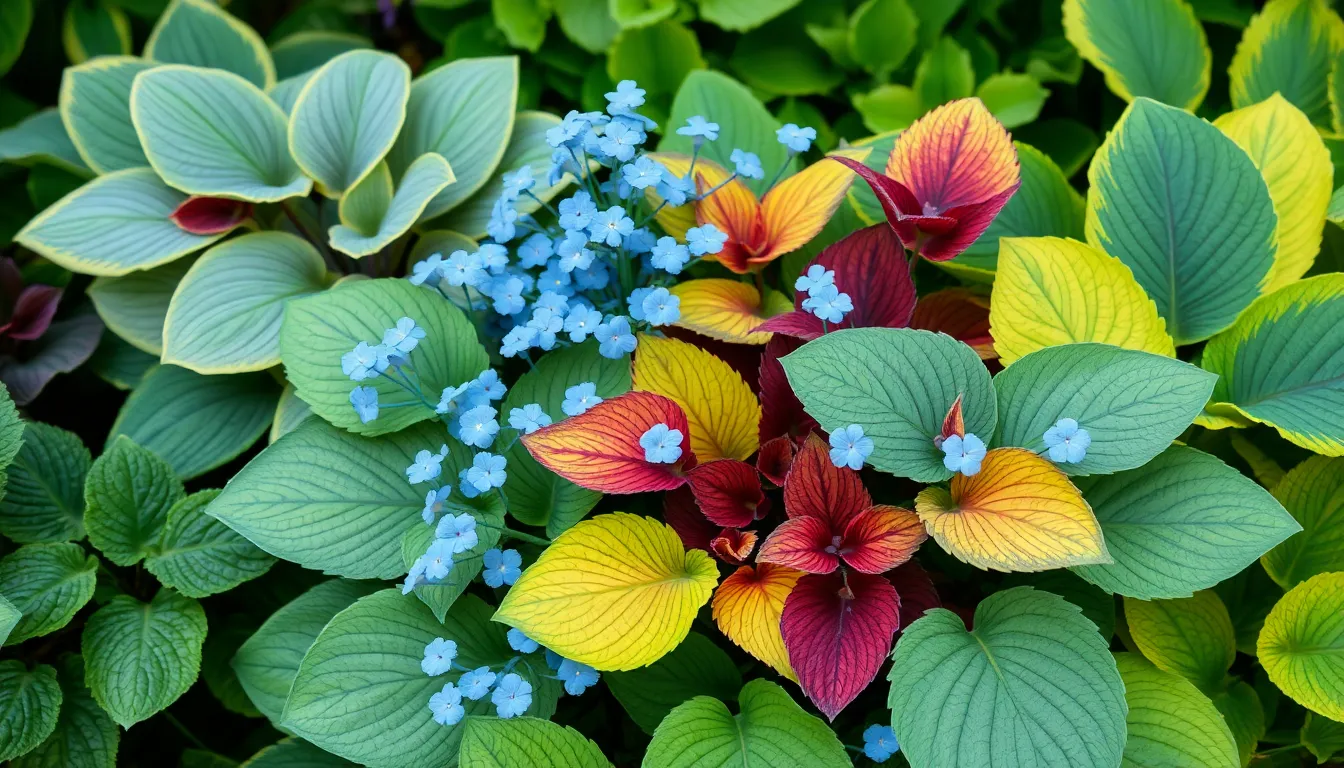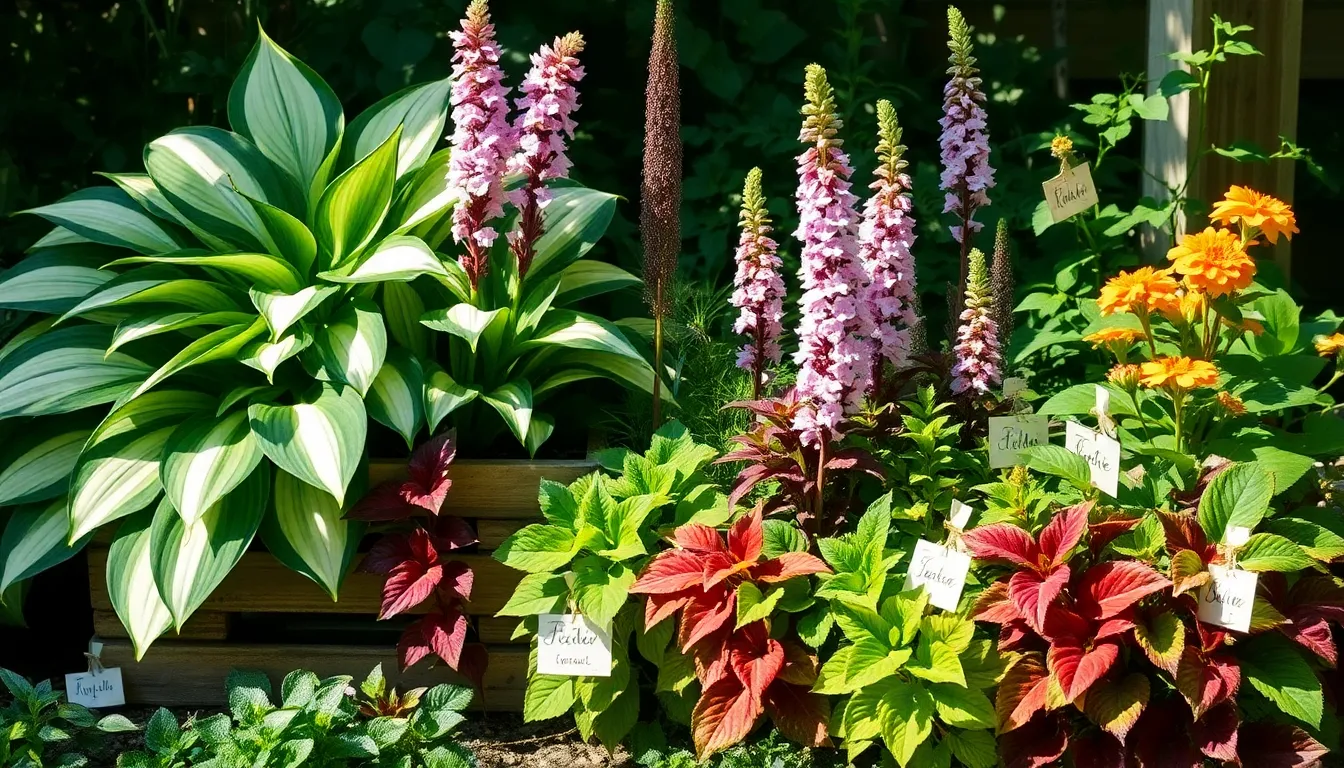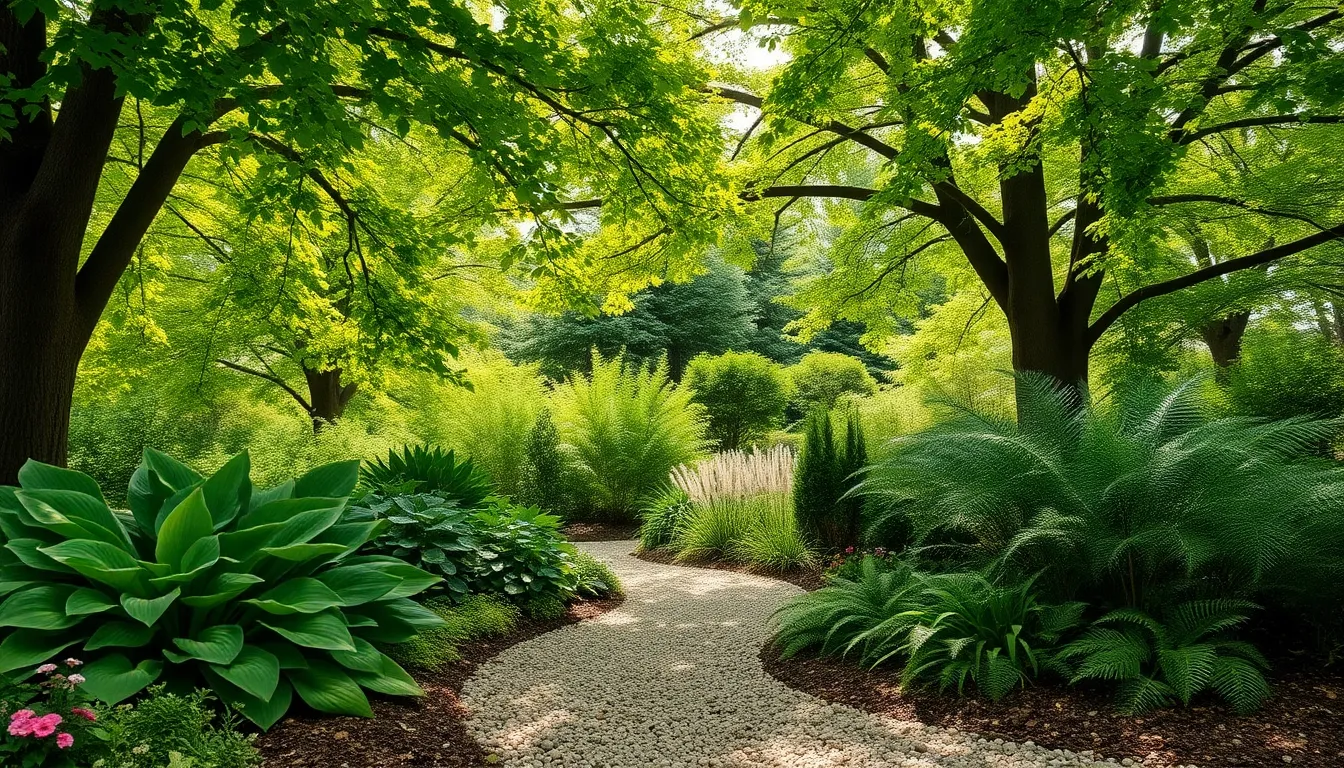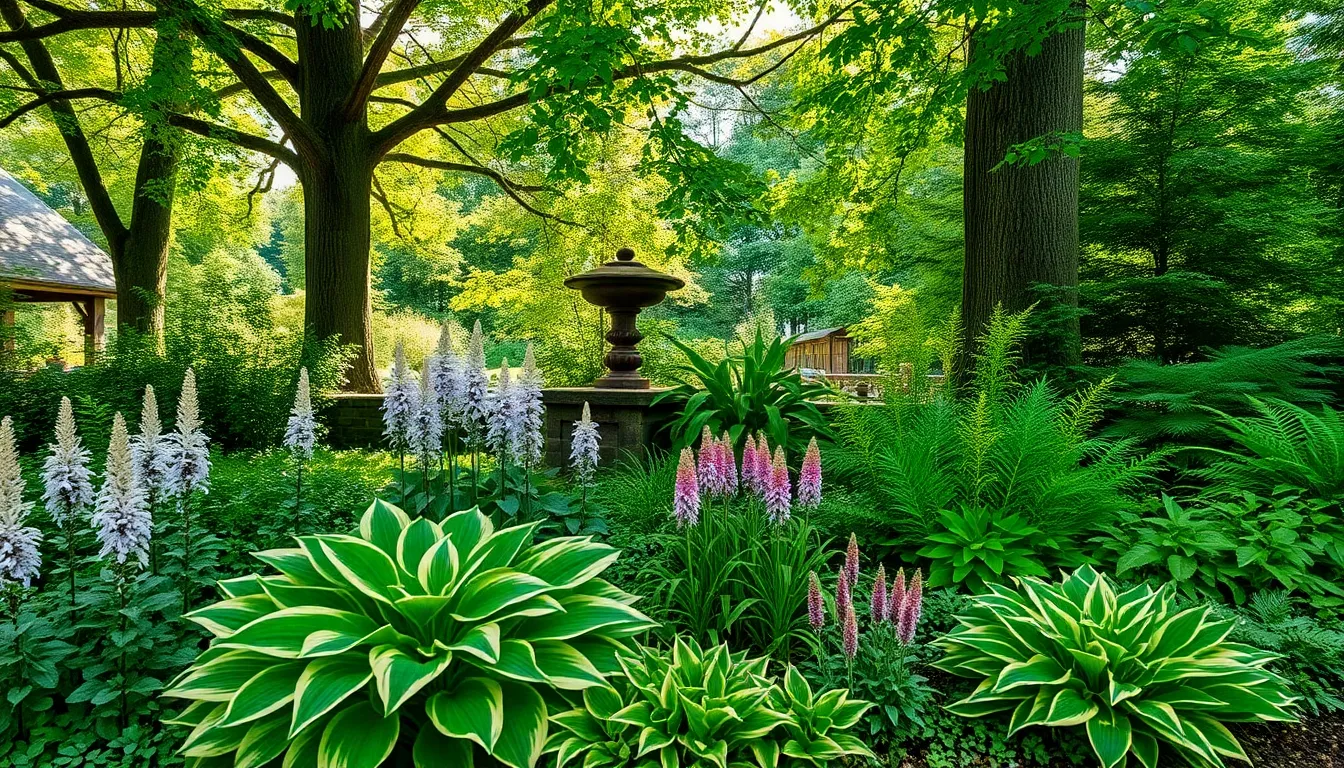Welcome to the enchanting world of shade gardening, where dappled sunlight and gentle shadows create a serene oasis for plant enthusiasts. Whether you’re new to the joys of gardening or a seasoned green thumb looking to expand your botanical repertoire, exploring unique shade garden plants will transform your garden into a lush, verdant retreat. This often-overlooked realm offers a surprising array of plants that thrive in lower light conditions, bringing texture, color, and life to the more subdued corners of your outdoor space.
In this article, we will delve into 13 remarkable shade garden plants that defy the notion that only the sunniest spots can be vibrant. Each of these plants boasts unique characteristics, from striking foliage to delicate blooms, ensuring that your shady nooks are as captivating as their sunlit counterparts. As you follow along, you’ll gain insights into selecting the right plants for your garden’s specific conditions and learn practical tips for nurturing them to their fullest potential. Whether you’re creating a woodland wonderland or simply enhancing a shaded corner, this guide will inspire and equip you to grow a thriving haven of tranquility.
Understanding Shade Garden Basics
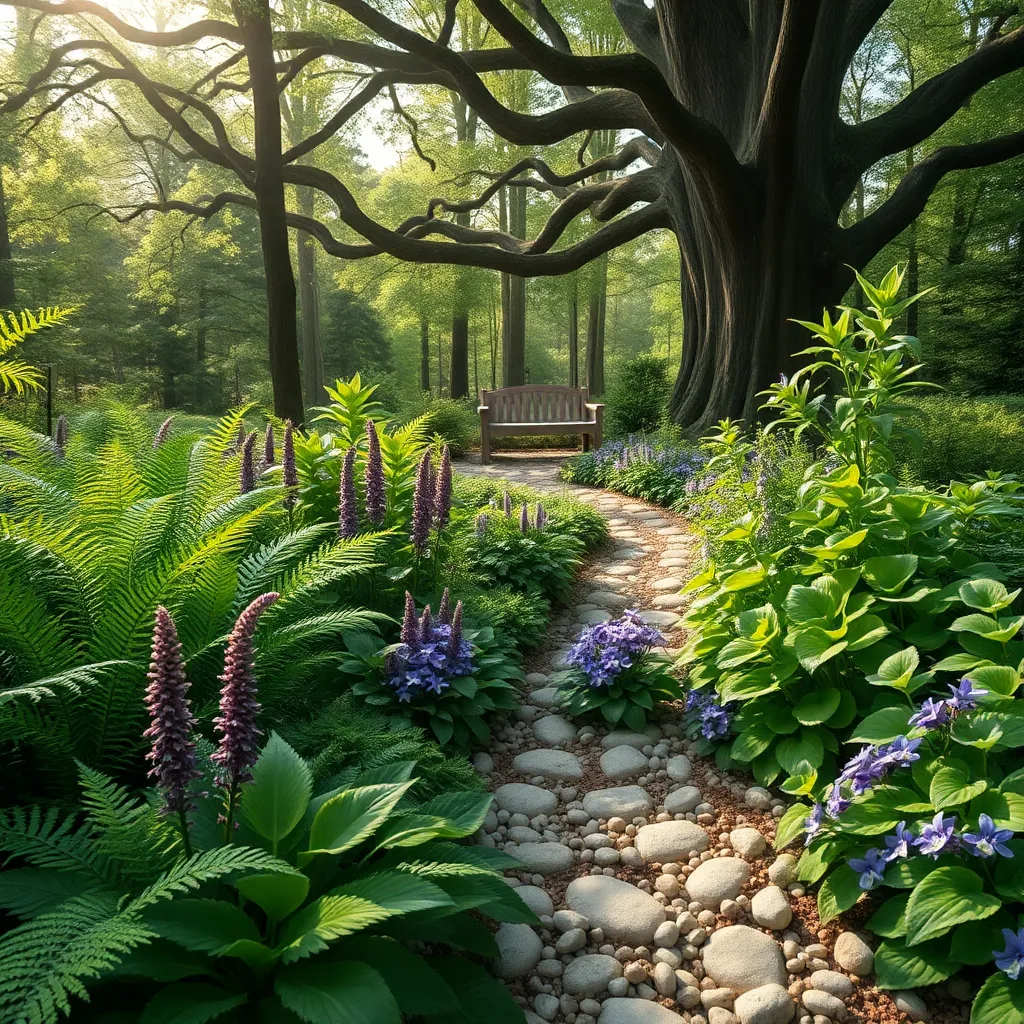
Shade gardens offer a unique opportunity to grow plants that thrive without direct sunlight, transforming shady areas into lush green spaces. Understanding the types of shade in your garden is crucial, as it can range from light, dappled shade to deep shade, each with different growing conditions.
For optimal growth, it’s important to choose soil that retains moisture yet drains well, such as a mix of loam and organic matter. Add compost or well-rotted manure to enrich the soil, as shade gardens can often have less fertile soil due to tree root competition.
Watering is another key factor in maintaining a healthy shade garden. While these gardens generally require less frequent watering than sunlit areas, monitor soil moisture closely, ensuring it remains consistently damp but not waterlogged.
Pruning and maintenance are essential to keep your shade garden thriving. Regularly trim back overhanging branches to allow sufficient light and air circulation, which helps prevent mold and mildew on plant leaves.
Choosing Shade-Tolerant Perennials
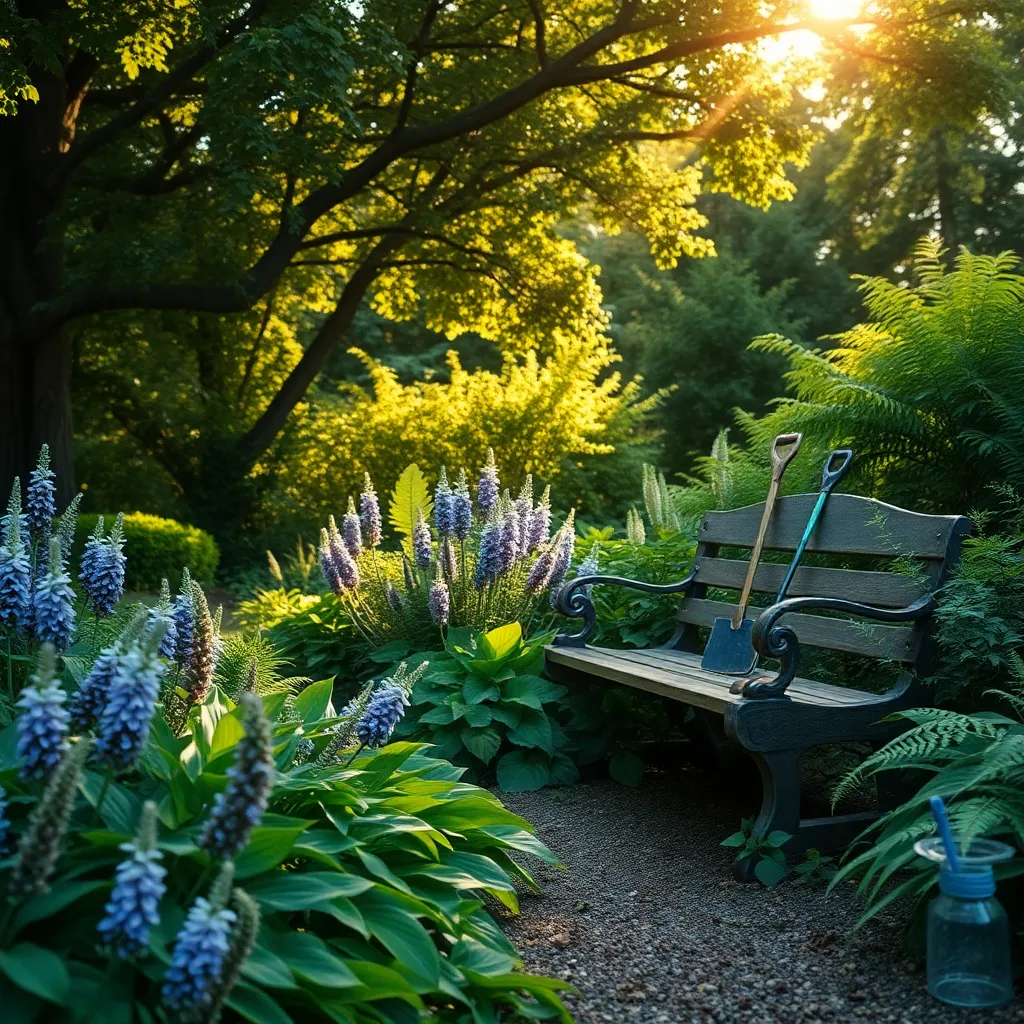
When choosing shade-tolerant perennials, it’s essential to consider the specific light conditions of your garden. Full shade typically means less than three hours of direct sunlight, whereas partial shade allows for up to six hours, mostly in the cooler parts of the day.
Hostas are a popular choice for adding lush foliage to shady areas, thriving in rich, well-draining soil. To keep them healthy, water them deeply once a week, ensuring the soil remains consistently moist but not waterlogged.
For vibrant color, consider planting Astilbes, which produce beautiful plume-like flowers in midsummer. These perennials prefer slightly acidic, moist soil and benefit from a layer of mulch to retain moisture and suppress weeds.
Advanced gardeners might explore planting Japanese Forest Grass for its striking golden foliage. Plant it in a sheltered location with dappled light and ensure the soil is rich in organic matter for optimal growth.
To enhance your shade garden further, experiment with varying textures and heights among your perennials. This approach not only adds visual interest but also creates a more natural and inviting space that encourages biodiversity.
Foliage Focus: Hostas and Ferns
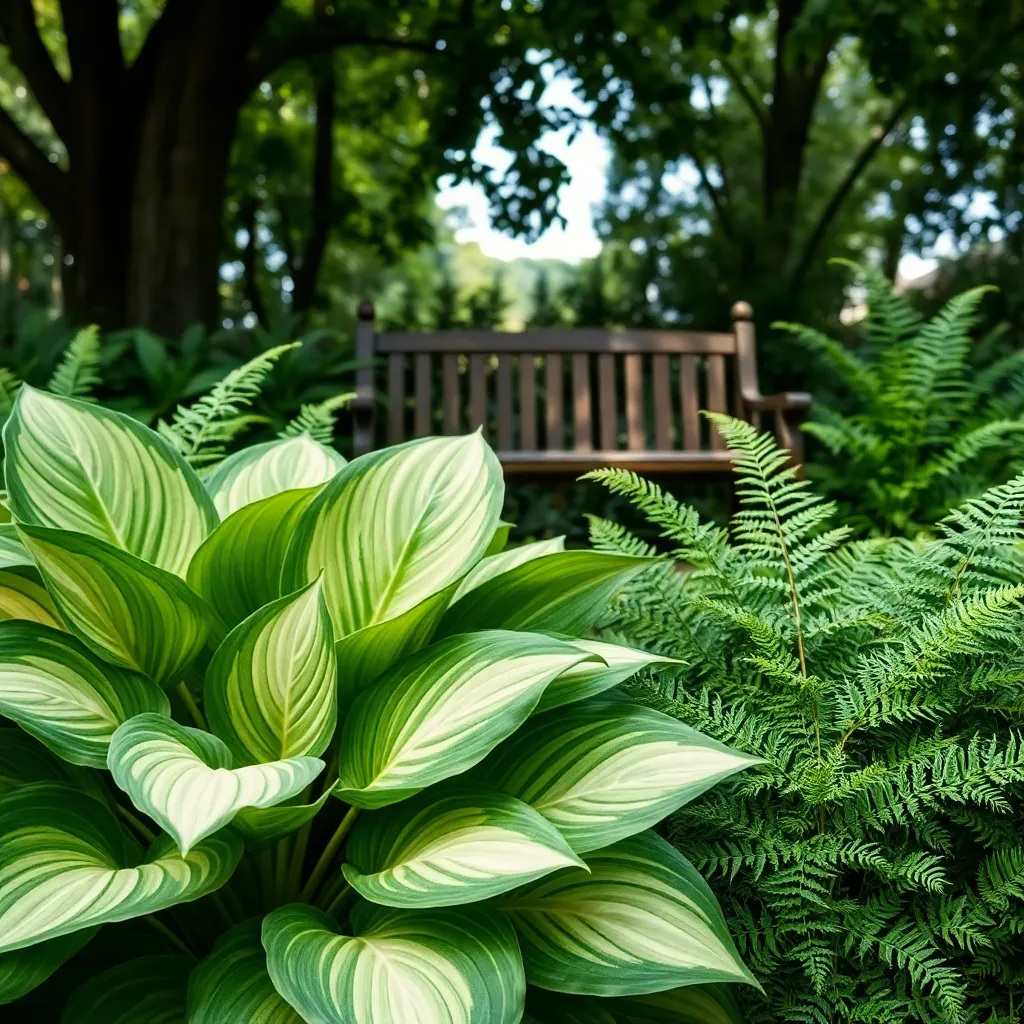
Hostas, known for their lush foliage, thrive in shady areas and are perfect for bringing texture to your garden. To grow hostas successfully, plant them in well-draining soil enriched with organic matter for maximum growth.
Ensure hostas receive consistent moisture, as they prefer slightly damp conditions without sitting in waterlogged soil. Mulching around the base can help retain moisture and keep their roots cool during warmer months.
For beginners, hostas are forgiving and resilient, making them ideal starter plants. More experienced gardeners can experiment with different varieties, such as ‘Blue Angel’ or ‘Frances Williams,’ which offer unique leaf colors and textures.
Ferns are another excellent choice for shade gardens, providing delicate fronds that add a soft, feathery look. They prefer humus-rich soil that retains moisture well, mimicking their natural woodland habitat.
Water ferns consistently, ensuring the soil remains moist but not soggy, as dry conditions can stunt their growth. For an advanced tip, consider incorporating compost tea into your watering routine to boost their nutrient intake naturally.
Beginner gardeners will find ferns easy to manage, as they are relatively pest-resistant and low maintenance. For those with more experience, try layering different fern varieties, like the Japanese Painted Fern or the Lady Fern, to create a tapestry of varying heights and colors.
Colorful Blooms: Astilbes and Heucheras
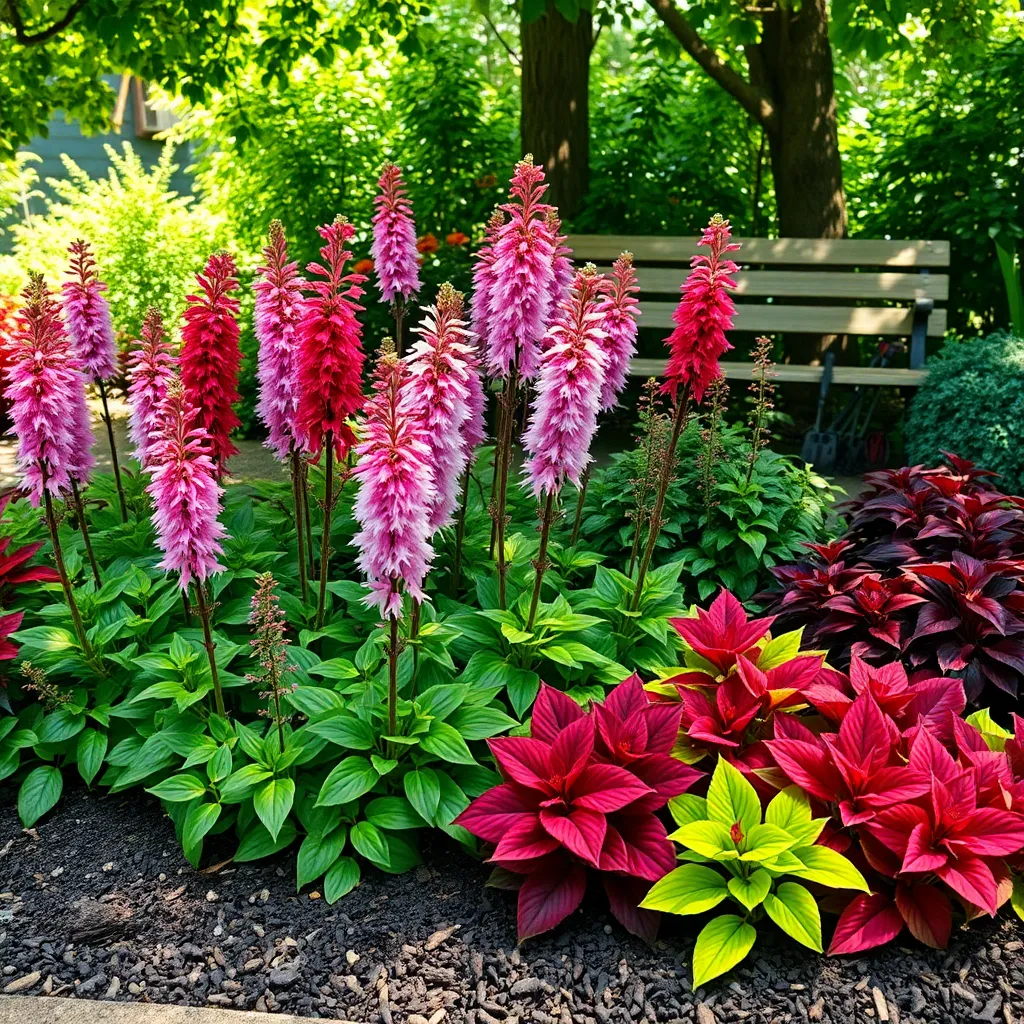
Astilbes are beloved for their feathery plumes and ability to brighten up shady spots with their vibrant colors. To thrive, they require consistently moist soil rich in organic matter, so consider adding compost to your garden bed before planting.
Heucheras, also known as coral bells, add a unique pop of color with their striking foliage that ranges from deep purples to bright greens. These plants prefer well-draining soil and benefit from a layer of mulch to retain moisture and keep roots cool.
Both astilbes and heucheras perform best in partial to full shade, making them perfect companions for areas that receive dappled sunlight. Water astilbes regularly, especially during dry spells, as they are not drought-tolerant; heucheras, on the other hand, require less frequent watering once established.
For more experienced gardeners, consider dividing astilbes and heucheras every 3-4 years to maintain their vigor and encourage more blooms. When dividing, use a sharp spade to cut through the roots, and replant in a new location with similar growing conditions.
Texture Variety with Shade Grasses
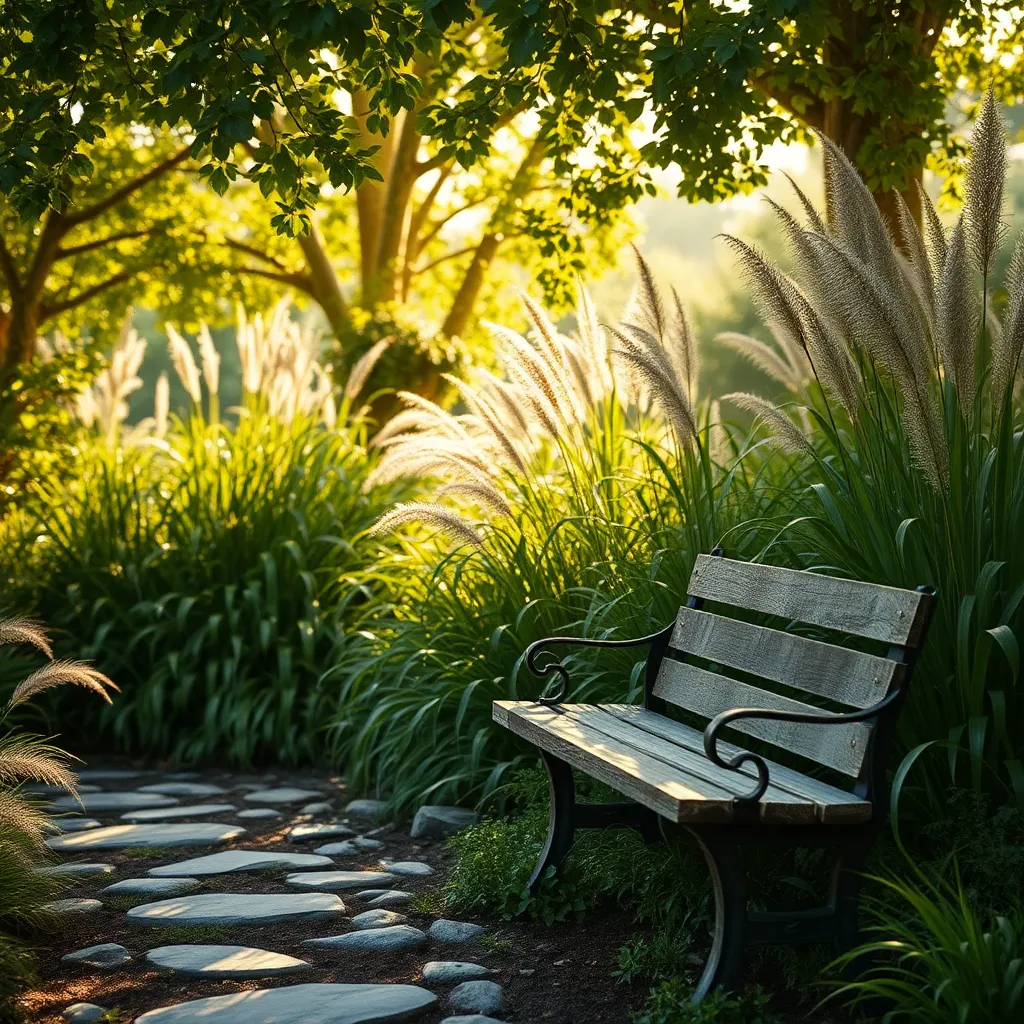
Adding shade grasses to your garden introduces not only texture but also a dynamic layer of interest throughout the seasons. Japanese forest grass (Hakonechloa macra) is a fantastic choice, known for its elegant, arching foliage that thrives in partial to full shade.
To successfully grow Japanese forest grass, ensure it is planted in well-draining, humus-rich soil. Regular watering is crucial, especially during dry spells, to maintain its lush appearance without allowing the soil to become waterlogged.
Another excellent option is Carex ‘Ice Dance’, a sedge that offers striking variegated leaves. This plant is not only shade-tolerant but also drought-resistant once established, making it a low-maintenance choice for busy gardeners.
When planting Carex varieties, space them about 12 inches apart to allow for their spreading habit while maintaining a tidy appearance. Mulching around the plants helps retain moisture and suppress weeds, ensuring your shade garden remains healthy and vibrant.
Uncommon Beauties: Toad Lilies
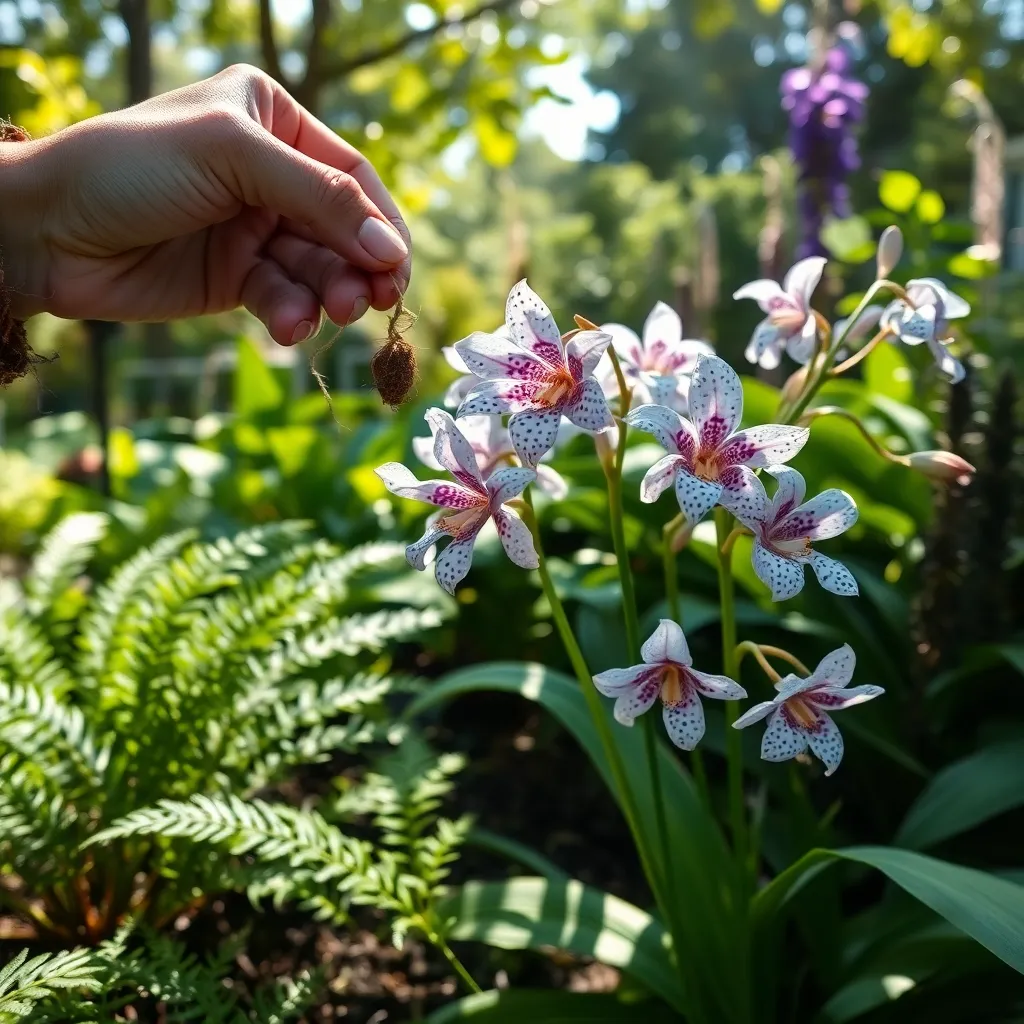
Toad lilies are captivating additions to any shade garden, known for their exotic, orchid-like blooms that appear in late summer to fall. These perennials thrive in partial to full shade, making them perfect for those tricky spots under trees or along the north side of buildings.
When planting toad lilies, choose a spot with rich, well-draining soil, enriched with organic matter such as compost. A layer of mulch can help maintain soil moisture, as they prefer consistently moist conditions, especially during dry spells.
Water these plants regularly, aiming for about an inch of water per week, but be cautious to avoid waterlogged conditions that can lead to root rot. For the best blooms, consider feeding them with a balanced, slow-release fertilizer in early spring.
Advanced gardeners might want to propagate toad lilies by division in early spring. Simply dig up clumps and gently separate them, ensuring each division has a few healthy shoots and roots, then replant them in prepared soil.
Striking Patterns: Lungwort Leaves
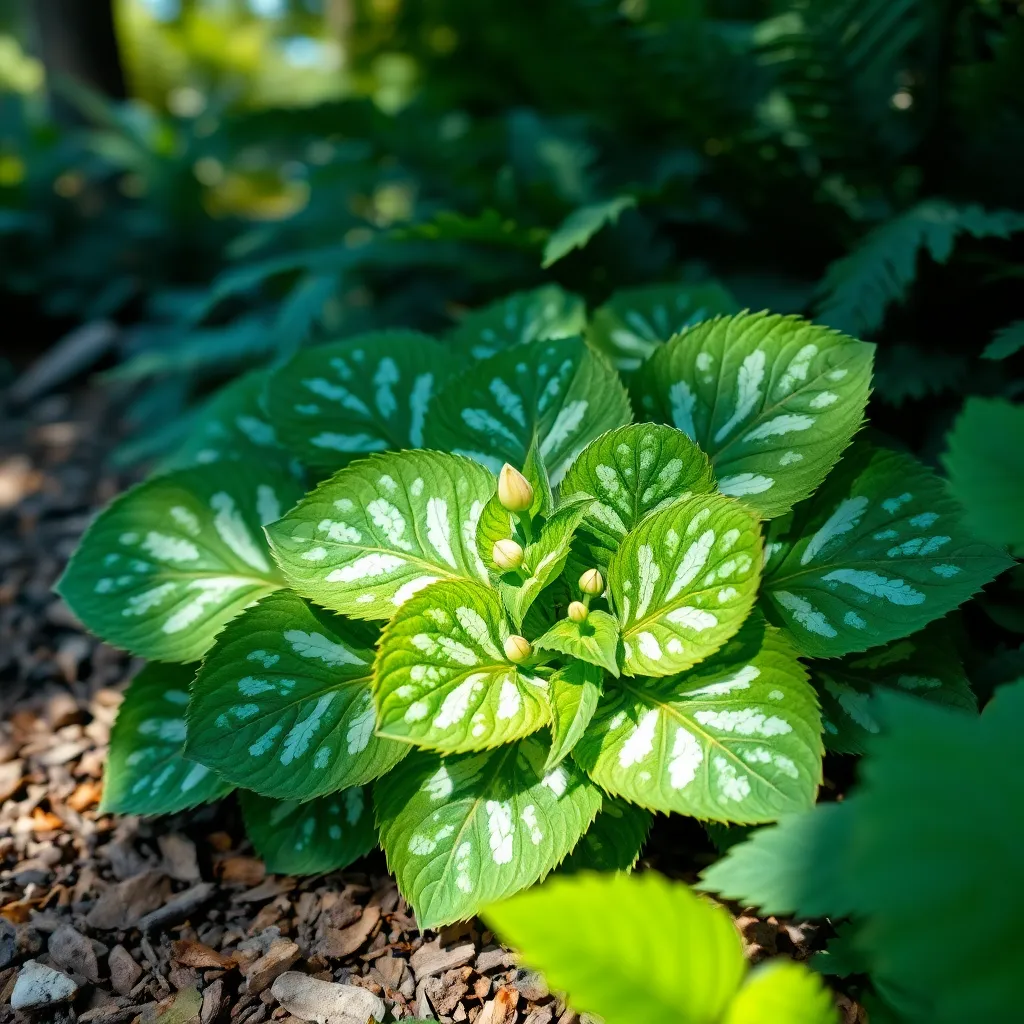
Lungwort, scientifically known as Pulmonaria, is a shade-loving plant that captivates with its strikingly patterned leaves. These leaves are often spotted or mottled, providing a unique visual texture perfect for brightening darker garden areas.
When planting Lungwort, ensure the soil is well-draining and rich in organic matter. A mix of compost and loamy soil will help retain moisture while preventing root rot, which is crucial for its healthy growth.
Watering Lungwort requires a balance; keep the soil consistently moist but not waterlogged. An early morning watering routine is ideal, as it allows the foliage to dry, reducing the risk of fungal diseases.
For those looking to enhance their Lungwort’s growth, consider a light application of balanced fertilizer in early spring. Additionally, mulching around the base can help conserve moisture and suppress weeds, making your maintenance efforts more effective.
Ground Covers: Vinca and Lamium
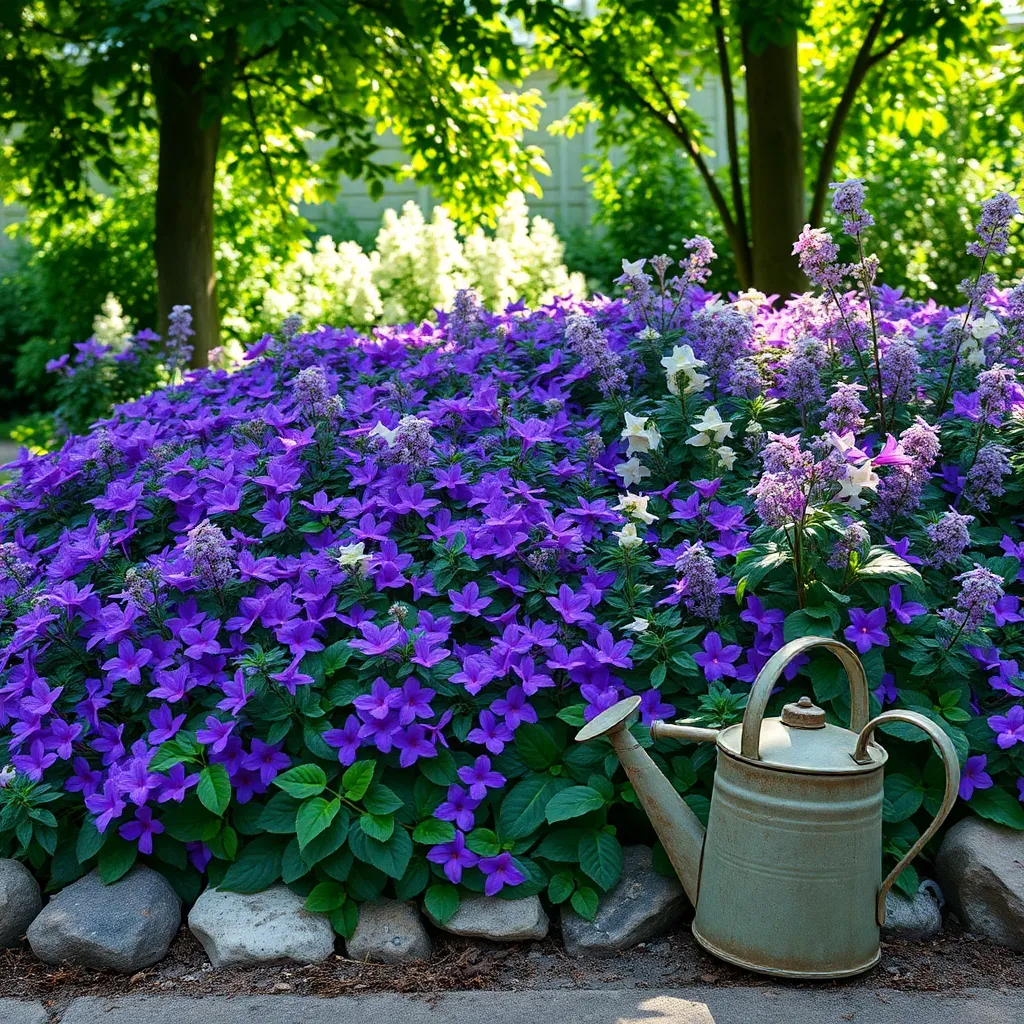
For gardeners seeking a lush, low-maintenance ground cover, Vinca, also known as periwinkle, is an excellent choice. This hardy plant thrives in shaded areas, making it perfect for spots under trees where other plants might struggle.
Vinca requires well-drained soil and should be planted in early spring or fall for optimal growth. To promote healthy growth, water the plants regularly until they are established, then reduce watering to maintain slight soil moisture.
One of Vinca’s greatest strengths is its ability to spread quickly, forming a dense mat of evergreen foliage. For beginners, this means you can cover a large area with minimal effort, while experienced gardeners can use it strategically to suppress weeds.
On the other hand, Lamium, or dead nettle, offers a unique blend of beauty and resilience for shaded gardens. With its variegated leaves and delicate blooms, Lamium can add texture and color where sunlight is sparse.
Lamium thrives in moist, well-drained soil and prefers partial to full shade, making it ideal for shaded borders and under trees. To keep Lamium thriving, mulch around the plants to retain moisture and suppress weeds, especially during dry periods.
Pruning Lamium after flowering can encourage a second bloom and prevent the plant from becoming too leggy. For those with more gardening experience, consider pairing Lamium with other shade-loving plants to create a layered, textured effect in your garden.
Shade-Loving Shrubs: Hydrangeas
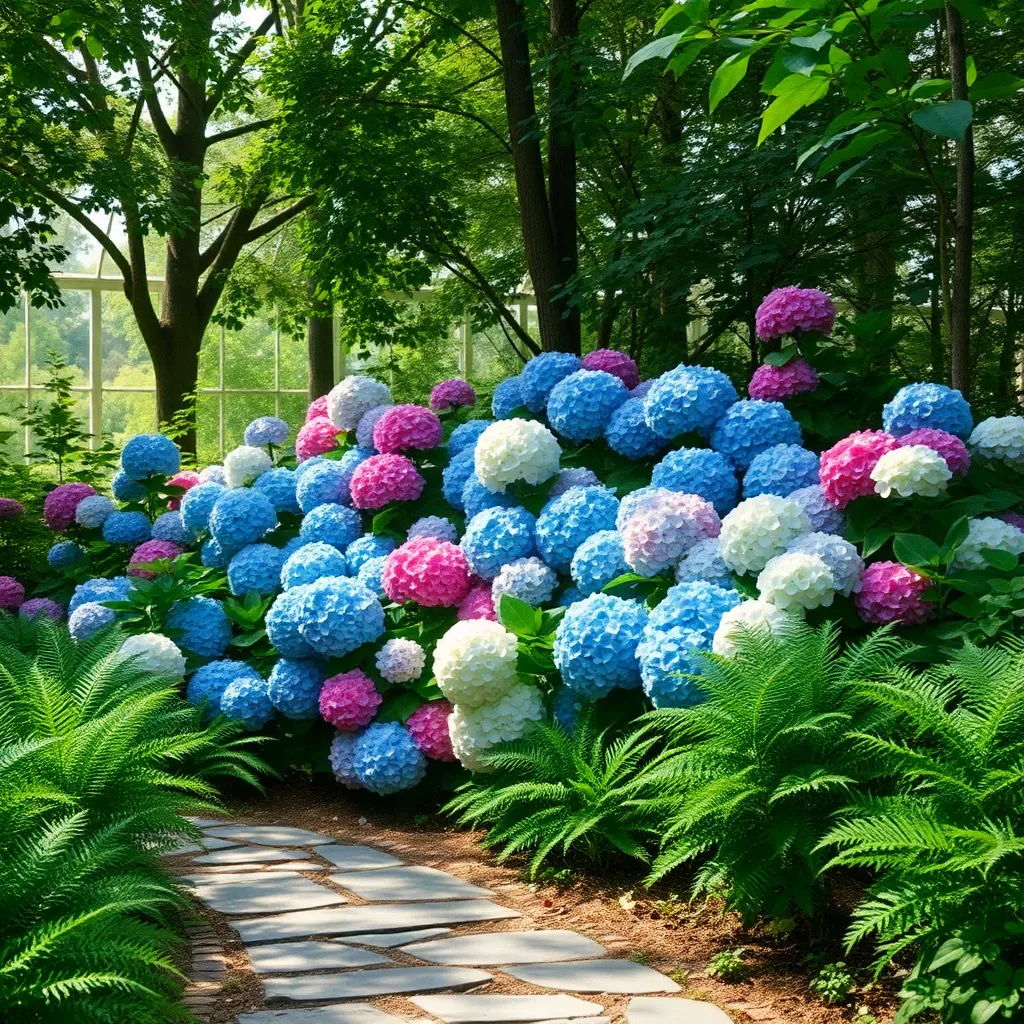
Hydrangeas are a stunning choice for shade gardens, offering vibrant blooms in various colors. To thrive, they prefer well-drained, rich soil and benefit from a layer of mulch to retain moisture.
When planting hydrangeas, choose a spot that receives morning sun and afternoon shade for optimal growth. For beginners, it’s essential to water them deeply once a week, adjusting for rainfall.
For those seeking a more advanced approach, consider the pH of your soil, as it can influence the color of the blooms. A soil pH of 5.2 to 5.5 will produce blue flowers, while a pH of 6.0 to 6.2 results in pink hues.
Pruning hydrangeas is crucial to encourage healthy growth and more blooms. Prune dead wood in early spring and shape the plant after flowering to maintain its desired size and form.
Seasonal Interest with Bleeding Hearts
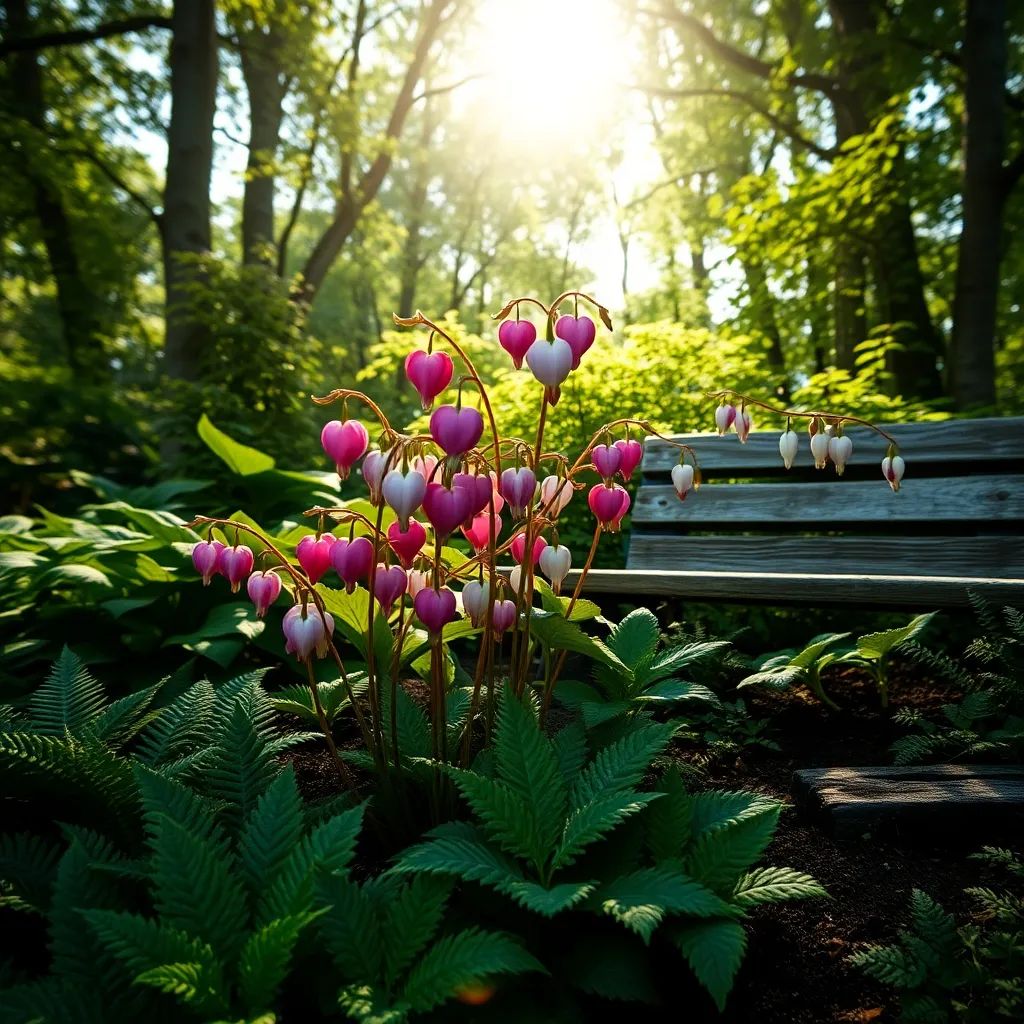
Bleeding Hearts are a classic choice for adding seasonal interest to shade gardens. These perennials thrive in partial to full shade, making them perfect companions for other shade-loving plants like hydrangeas.
Plant Bleeding Hearts in well-draining, humus-rich soil to support their growth and vibrant blooms. Regular watering is essential, especially during dry spells, but ensure the soil does not become waterlogged to prevent root rot.
For beginners, it’s important to know that Bleeding Hearts go dormant in the summer, allowing other shade plants to take the spotlight. A layer of mulch can help retain soil moisture and protect the roots during hotter months.
Experienced gardeners might consider companion planting Bleeding Hearts with ferns and hostas for a stunning, layered effect. Incorporating organic matter into the soil annually can boost plant vigor and flowering potential.
Unique Fern Varieties for Shade
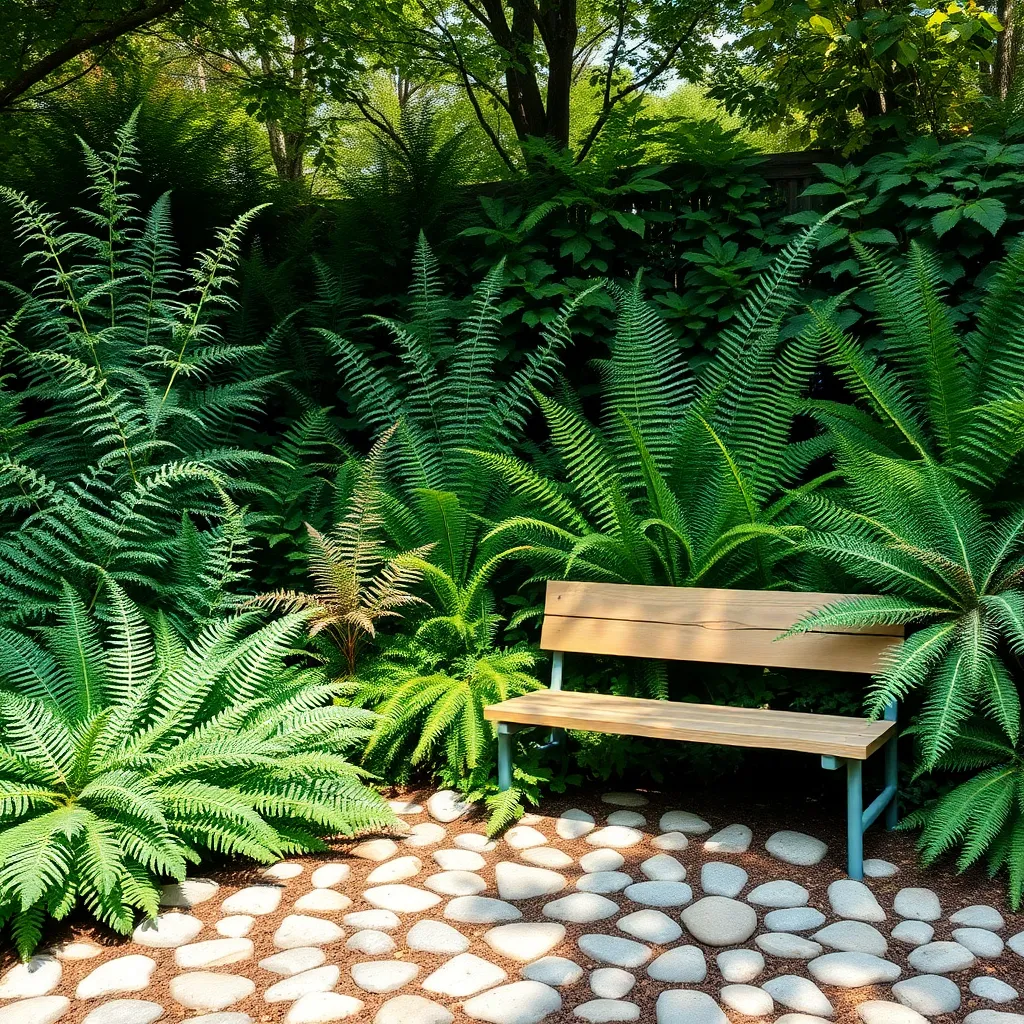
Ferns are a fantastic choice for shaded gardens, offering lush greenery and unique textures. One standout variety is the **Japanese Painted Fern**, known for its striking silver and burgundy fronds. Plant it in well-draining, rich soil and keep it consistently moist, but not waterlogged, for optimal growth. Mulching with organic material can help retain moisture and provide nutrients.
Another excellent option is the **Maidenhair Fern**, prized for its delicate, fan-shaped leaves. It thrives in high humidity and prefers indirect light, making it perfect for shaded areas with dappled sunlight. Regular watering is essential, as this fern does not tolerate drought, but be careful to avoid soggy soil. For a more advanced tip, consider misting your Maidenhair Fern to mimic its natural environment and promote vibrant growth.
The **Ostrich Fern** is a robust variety that can add height and drama to your shade garden. It can grow up to six feet tall in the right conditions, which include rich, slightly acidic soil and consistent moisture. This fern is also a great choice for gardeners looking to create a naturalistic feel, as it spreads via underground rhizomes. To manage its spread, consider planting it in a contained area or using barriers to control its growth.
For gardeners interested in something more unusual, the **Cinnamon Fern** offers a unique touch with its cinnamon-colored fronds. It prefers a **moist, shaded environment** and can even tolerate wet soils, making it ideal for planting near ponds or streams. Ensure the soil is rich in organic matter to support its nutrient needs. To enhance its striking appearance, plant it alongside other shade-loving plants with contrasting foliage, like hostas or astilbes.
Creating Depth with Variegated Plants
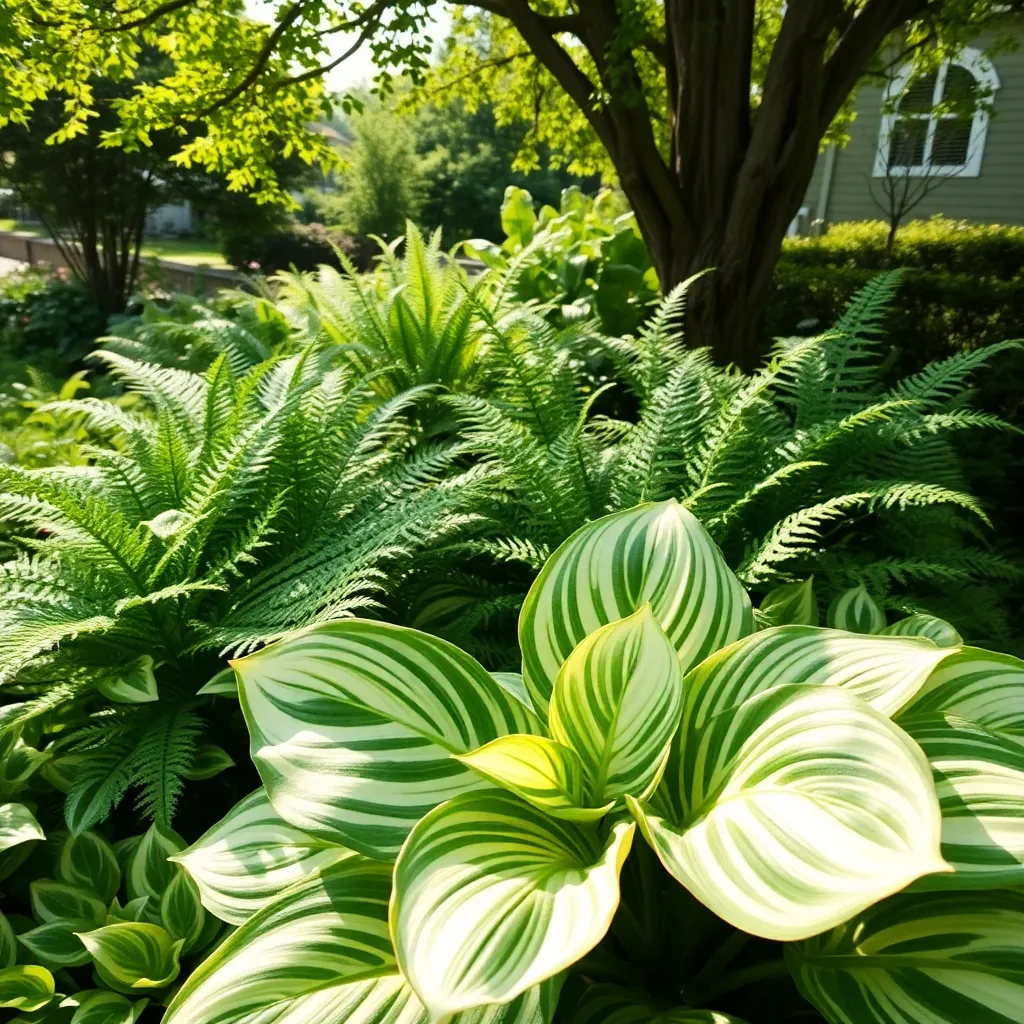
Incorporating variegated plants into your shade garden can instantly add dimension and visual interest. Their unique leaf patterns and color variations, such as whites, creams, and greens, create a dynamic backdrop that complements surrounding greenery.
To successfully grow variegated plants, ensure they receive adequate but indirect light, which helps maintain their striking color contrasts. While these plants thrive in shade, some morning sunlight can enhance their variegation, making them a perfect fit for dappled light conditions.
Soil quality plays a crucial role in the health of variegated plants. Use a well-draining, rich organic soil to provide essential nutrients, and consider adding organic matter like compost to improve soil structure.
Watering needs for variegated plants can vary depending on the species, but most prefer consistently moist soil. It’s important to regularly check soil moisture levels and water deeply but less frequently to encourage deep root growth.
- Choose plants like Hosta ‘Patriot’ or Brunnera ‘Jack Frost’ for their stunning variegated foliage.
- Mulch around the base to retain moisture and keep roots cool.
- Prune any solid green leaves that revert from variegation to maintain plant aesthetics.
Advanced gardeners might experiment with layering different variegated plants to create a tapestry effect. This technique involves placing plants with different leaf shapes and sizes together to enhance the garden’s depth and texture.
Design Tips for Lush Shade Gardens
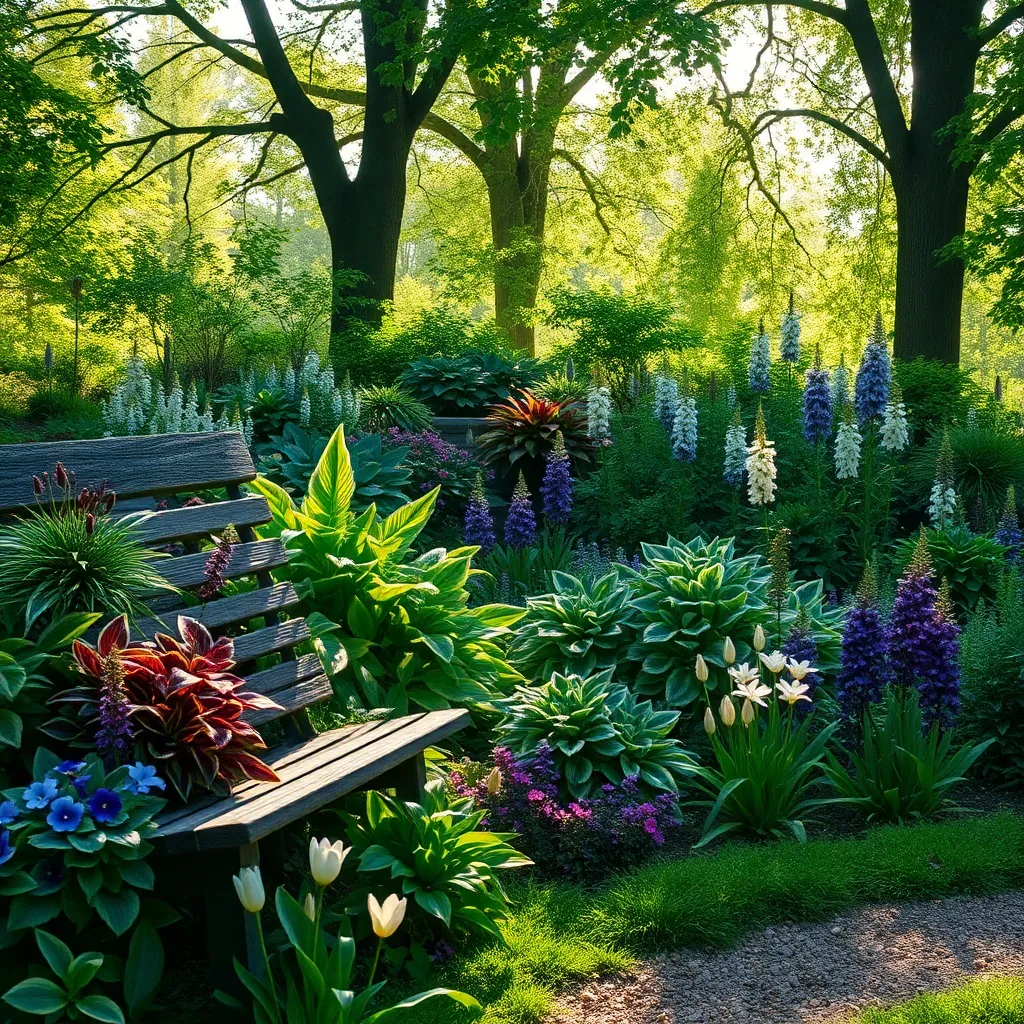
Incorporating a variety of textures is essential in designing a lush shade garden. By combining plants with different leaf shapes and sizes, such as ferns with hostas, you create visual interest that draws the eye.
Consider using a mix of evergreen and deciduous plants to maintain year-round appeal. Evergreen plants, like hellebores, provide structure even in the winter months, while deciduous plants offer seasonal color changes.
Pay attention to the soil type to ensure your shade garden thrives. Most shade-loving plants prefer well-drained, rich soil, so consider adding organic matter like compost to improve soil fertility and structure.
Watering is crucial for shade gardens, but overwatering can lead to problems like root rot. Ensure the soil is consistently moist but not waterlogged, and consider using a drip irrigation system to maintain the right balance.
For a more advanced touch, experiment with layering different heights to create depth. Utilize tall, airy plants like astilbes at the back and ground covers such as ajuga or sweet woodruff at the front to build a tiered effect.
Choose plants that naturally thrive in low-light conditions to minimize maintenance. Varieties like lungwort and Japanese forest grass are not only shade-tolerant but also add bursts of color and unique texture.
Conclusion: Growing Success with These Plants
In exploring the diverse landscape of shade garden plants, we’ve uncovered 13 unique relationship concepts that thrive in the quieter corners of love. From the resilience of ferns symbolizing adaptability to the rich, layered beauty of hostas reflecting the depth of understanding, each plant offers a metaphor for nurturing a thriving relationship. The colorful blooms of astilbes remind us of the joy in shared experiences, while the steady presence of heucheras embodies reliability and trust.
As you reflect on these insights, take a moment to identify one relationship concept that resonates with you and discuss it with your partner or loved one. This simple step can open pathways to deeper connection and mutual growth.
Remember, a flourishing relationship is like a well-tended garden—it requires attention, patience, and care. Bookmark this article as your go-to guide for relationship inspiration and revisit it whenever you need a boost of motivation or a fresh perspective.
Looking ahead, embrace these concepts as seeds of potential that, when nurtured, can lead to lasting relationship success. Your journey to a more fulfilling relationship starts today, and with these tools, the future is bright and full of promise.

